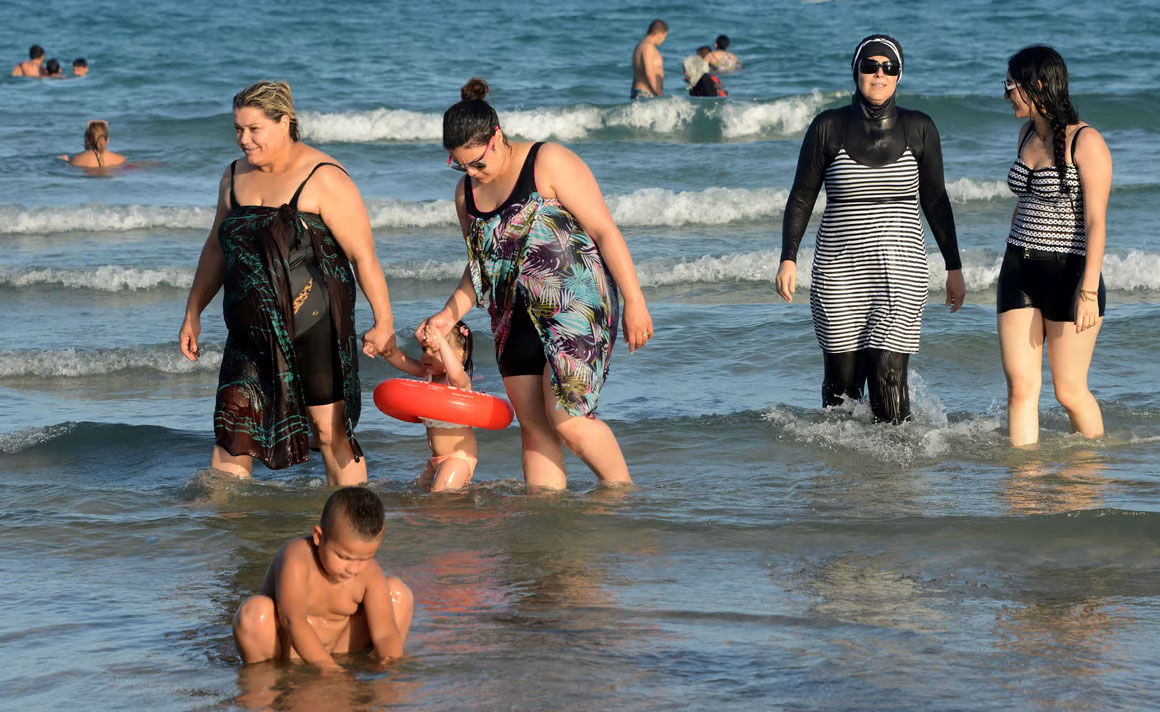Introduction to Burkini
The burkini, a modest swimsuit designed for Muslim women, has become one of the most discussed, debated, and symbolically rich garments in recent history. Coined from a combination of “burka” and “bikini,” the burkini has transcended its function as swimwear to spark conversations about identity, religion, gender, body autonomy, multiculturalism, and freedom. While it was initially created to offer Muslim women the opportunity to enjoy swimming while adhering to Islamic guidelines of modesty, the has since become a symbol of inclusion, empowerment, and sometimes controversy.
The Origin of the Burkini
The burkini was invented in 2004 by Aheda Zanetti, a Lebanese-Australian designer. Living in Sydney, Zanetti observed a common struggle among Muslim women, especially teenagers, who wanted to participate in sports and beach activities but found their options restricted by clothing norms. Traditional swimwear, such as the one-piece or bikini, clashed with Islamic standards of modesty, which generally require women to cover their arms, legs, and hair.
Zanetti’s innovation was to create a garment that met Islamic modesty standards while using lightweight, quick-drying fabric suitable for water. The burkini covers the entire body except for the face, hands, and feet, allowing free movement in water. Her brand, Ahiida, launched the first in Australia, and the idea quickly gained popularity not just in Muslim-majority countries but also among Muslim communities in the West.
What the Burkini Represents
1. Freedom of Choice
Although critics have sometimes framed the burkini as a symbol of oppression, many women who wear it argue that it represents the opposite: freedom and empowerment. For these women, the offers a way to reconcile religious or cultural identity with a modern lifestyle. It allows them to swim, surf, and participate in beach or pool activities without compromising their beliefs.
The true essence of feminism lies in supporting women’s choices — whether that means wearing a bikini, a burkini, or anything in between. For many wearers, the is a liberating garment that enables full participation in public life.
2. Religious and Cultural Identity
For observant Muslim women, modesty in dress is a spiritual commitment. The burkini enables them to remain faithful to these principles while still enjoying sports, leisure, and social events. Rather than seeing religion and recreation as mutually exclusive, the harmonizes both spheres.
Moreover, as global migration increases and multicultural societies evolve, clothing like the burkini allows people to celebrate and maintain their cultural heritage. It’s a testament to the blending of tradition and modernity.
Burkini Controversies and Bans
Despite its inclusive intent, the burkini has often been at the center of political and social controversies — particularly in Europe.
1. France’s Burkini Ban
In 2016, several towns in France banned the burkini from public beaches, citing concerns over public order, secularism, and security. Photographs of police officers forcing a woman to remove her on a beach sparked international outrage and a heated debate over religious freedom and women’s rights.
France, with its strong secular values (laïcité), often regulates religious symbols in public spaces. However, critics of the ban argued that it disproportionately targeted Muslim women and infringed on their civil liberties. Human rights groups and feminist organizations rallied against the bans, stating that telling women what not to wear is as oppressive as forcing them to wear something.
Eventually, France’s highest administrative court overturned the bans, stating they violated fundamental freedoms.
2. The Broader Western Debate
Similar debates have occurred in other countries, including Germany, Belgium, and even parts of Canada. These controversies often reflect broader tensions over immigration, integration, Islamophobia, and women’s rights. The burkini has, in many ways, become a lightning rod for deeper anxieties about multiculturalism and national identity.
However, surveys and testimonials from Muslim women continue to highlight that the burkini is worn by choice — a fact often overlooked in the political framing of these issues.
The Fashion Industry Embraces the Burkini

In recent years, the fashion industry has taken major steps toward inclusivity, and modest fashion has become a booming market. Recognizing the global demand, major brands have begun offering Burkini and other modest swimwear options.
1. Mainstream Brands Join In
In 2019, Nike released a modest swimwear line, and earlier, they launched the Nike Pro Hijab, designed for Muslim athletes. Other brands like Speedo, H&M, and Adidas have also joined the trend, offering modest swimwear collections suitable for women of all backgrounds.
This shift marks a growing recognition of diverse beauty standards and customer bases. It acknowledges that inclusivity isn’t just about race or size but also about religious and cultural preferences.
2. Representation and Visibility
The presence of modest swimwear models in magazines, campaigns, and advertisements has played a crucial role in reshaping public perception. Women wearing are now seen not just in niche catalogs but in international marketing campaigns, symbolizing a broader embrace of diversity.
Burkini Beyond Islam
Interestingly, the appeal of the burkini has extended beyond Muslim communities. Women who want to protect their skin from sun exposure, those with body image concerns, and older women often choose or similar modest swimsuits for comfort and coverage.
Cancer survivors, people with certain disabilities, and those practicing specific religions (e.g., Orthodox Judaism or conservative Christianity) also benefit from such clothing. This demonstrates that the serves a functional, aesthetic, and ethical purpose beyond any single group.
Challenges and the Road Ahead
While acceptance has grown, challenges remain:
- Social Stigma: In some areas, burkini-wearing women still face stares, exclusion, or judgment.
- Access: In countries with limited retail diversity, finding modest swimwear can still be difficult.
- Misconceptions: Many people still falsely equate modest clothing with coercion, rather than understanding it as a personal or religious choice.
Education, representation, and inclusive fashion policies are key to shifting these perceptions.
Conclusion
The burkini is more than just swimwear — it’s a symbol of empowerment, diversity, and freedom of expression. It exemplifies how fashion can bridge cultural divides and offer dignity and choice to those who have historically been marginalized.
Rather than seeing the burkini as a symbol of difference, we can view it as part of a broader movement toward global inclusivity — one that celebrates each individual’s right to choose how they dress, how they express their faith, and how they engage with the world. In embracing the, we take one more step toward a society that respects, rather than regulates, difference.
You Many Also Read: BBAI stock


